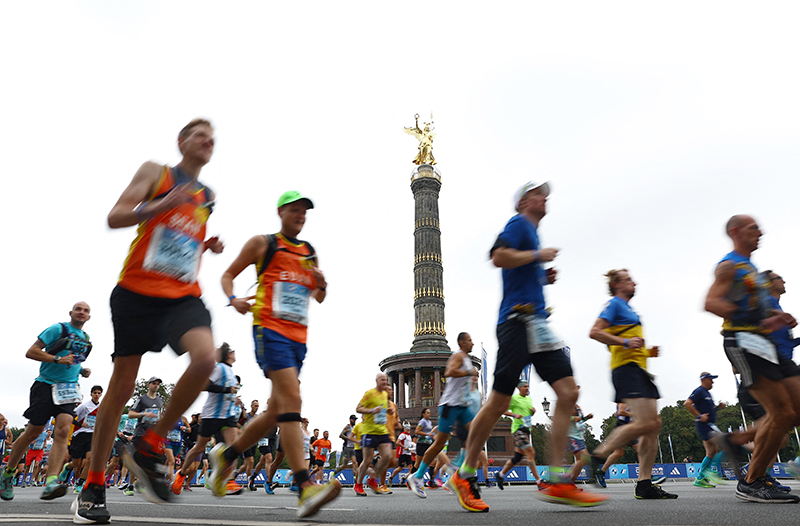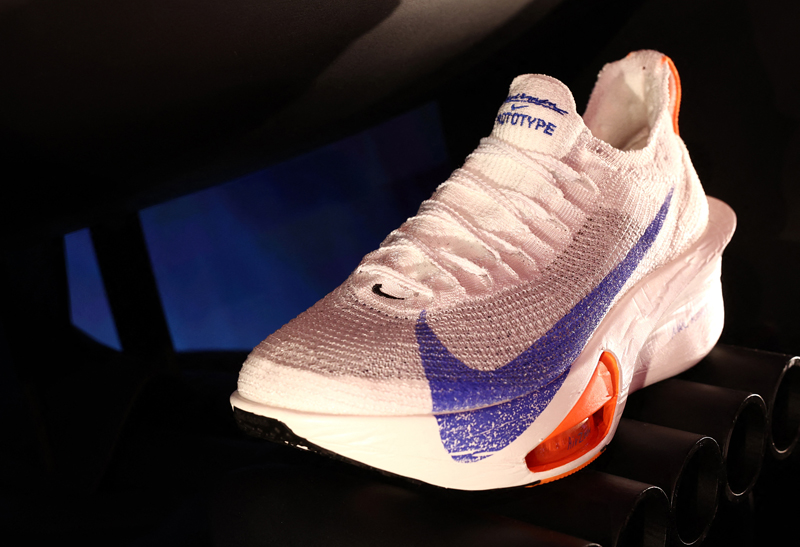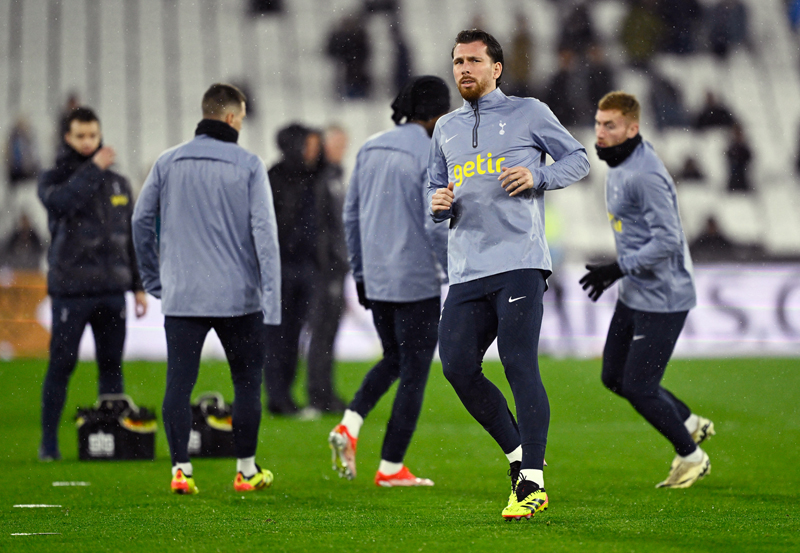Super shoes for ordinary runners - yes or no?

In my early days as a wet behind the ear runner, one of the most gruelling running sessions I ever completed was a series of intervals on soft sand. Not only did I fail to complete the session, the times I clocked up for the efforts I did complete were abysmal. Not only that, I was also completely shattered afterwards. Of course, what I hadn’t appreciated was just how much extra effort and energy it takes, when instead of returning your energy after footstrike, the sand below it simply absorbed much of it.
The foot-ground interface
The interface between the foot and the terrain below is crucial for runners. Since efficient running relies on some of the energy from footstrike being returned to aid the next stride, firm and non-yielding surfaces are obviously better in this respect than soft and yielding surfaces (although they do generate more impact shock in the muscles and joints – but that’s a whole different topic). Because most runners don’t run barefoot, the running shoes worn during a run become an important part of the foot-ground interface. In particular, running shoes that can provide good energy return characteristics can help maximize running efficiency (also known as running economy), thereby improving performance.
In a previous article exploring the challenges of running a sub-2-hour marathon, the role of energy-return technology was discussed, and in particular, the use of high-tech running shoes capable of reducing the energy cost for a given pace. A key conclusion based on the data presented in that article was that the difference between the best energy-returning running shoes and shoes that were merely ‘average’ was only about one percent of the total amount of the overall energy involved in running. While these sorts of gains are significant for elite runners at the top of their game, they are perhaps not enough for recreational runners to justify shelling oodles of extra hard-earned cash.
Energy-return shoe upsides for recreational runners
From the above, you might conclude that the kinds of benefits delivered by high energy-return shoes are only relevant for elite runners, and that amateur or recreational runners have nothing to gain by harnessing such technology. However, we could flip this reasoning on its head and argue that since less elite, slower runners are out on the road for longer, the total time savings that can be accrued by using highly-efficient energy return shoes are actually quite significant, and therefore worthy of consideration. But what is the truth?
In a 2020 study published by an international team of scientists, researchers tried to answer this question(1). In this study, the researchers compared running economy and 3km time-trial performances of recreational runners wearing three different types of shoes:
· Nike Vaporfly VP4 (very high energy return).
· Saucony Endorphin lightweight racing flats (very light to reduce weight on the foot).
· Each runner’s own habitual running shoes (no particular energy-saving features).
What they found was that that when the runners wore the VP4 shoes, their oxygen consumption was reduced by around 4.3% to 4.8% for a given pace compared to their normal shoes (ie they ran more efficiently). Oxygen consumption also dropped when wearing the racing flat shoes, but by a smaller amount (around 3%). With the VP4 shoes, the average 3km time trial performance was improved by around 17 seconds compared to the runners’ own shoes, and most of the runners ran their fastest 3km times when wearing the VP4 shoes. The flat shoes also reduced times (by around 13 seconds) but this improvement was not large enough to be considered statistically significant. In a nutshell, this study suggested that highly efficient energy-return shoes may well be beneficial for recreational runners too, for example when seeking a new PB.
New research
The study above makes for quite persuasive reading, but skeptics of high-tech shoes for recreational runners may rightly point out that a) this was just one study, b) it used several brands of shoes (remember, it also included a wide range of the runners’ own shoes as one of the trials), and c) the reduction in 3km times of 17 seconds with the very advanced VP4 shoe only just made it into the statistically significant category. To get a better handle on the situation, we can now look at a brand new study on hi-tech energy return shoes in recreational runners by a team of Greek and British researchers(2).
Published in the ‘International Journal of Sports Physiology and Performance’, this study investigated whether recreational runners could gain useful physiological and biomechanical benefits by wearing super shoes when running at the kind of pace that would be used during a marathon. To do this, a basic and advanced ‘super shoe’ from the same manufacturer were compared to see the beneficial effects (or otherwise). The shoes chosen were as follows (see figure 1):
· Saucony Endorphin Speed 2 – a high quality trainer aimed at more advanced runners, featuring a nylon ‘energy-return’ plate, similar in function to the carbon plate used in the Endorphin Pro 2
· Saucony Cohesion 13 – a more basic, budget-friendly shoe providing good levels of cushioning and durability, but with no energy-return features.
Figure 1: Saucony’s Endorphin Speed 2 (top) and Cohesion 13 (below) running shoes
You need to be logged in to continue reading.
Please register for limited access or take a 30-day risk-free trial of Sports Performance Bulletin to experience the full benefits of a subscription. TAKE A RISK-FREE TRIAL
TAKE A RISK-FREE TRIAL
Newsletter Sign Up
Testimonials
Dr. Alexandra Fandetti-Robin, Back & Body Chiropractic
Elspeth Cowell MSCh DpodM SRCh HCPC reg
William Hunter, Nuffield Health
Newsletter Sign Up
Coaches Testimonials
Dr. Alexandra Fandetti-Robin, Back & Body Chiropractic
Elspeth Cowell MSCh DpodM SRCh HCPC reg
William Hunter, Nuffield Health
Keep up with latest sports science research and apply it to maximize performance
Today you have the chance to join a group of athletes, and sports coaches/trainers who all have something special in common...
They use the latest research to improve performance for themselves and their clients - both athletes and sports teams - with help from global specialists in the fields of sports science, sports medicine and sports psychology.
They do this by reading Sports Performance Bulletin, an easy-to-digest but serious-minded journal dedicated to high performance sports. SPB offers a wealth of information and insight into the latest research, in an easily-accessible and understood format, along with a wealth of practical recommendations.
*includes 3 coaching manuals
Get Inspired
All the latest techniques and approaches
Sports Performance Bulletin helps dedicated endurance athletes improve their performance. Sense-checking the latest sports science research, and sourcing evidence and case studies to support findings, Sports Performance Bulletin turns proven insights into easily digestible practical advice. Supporting athletes, coaches and professionals who wish to ensure their guidance and programmes are kept right up to date and based on credible science.









